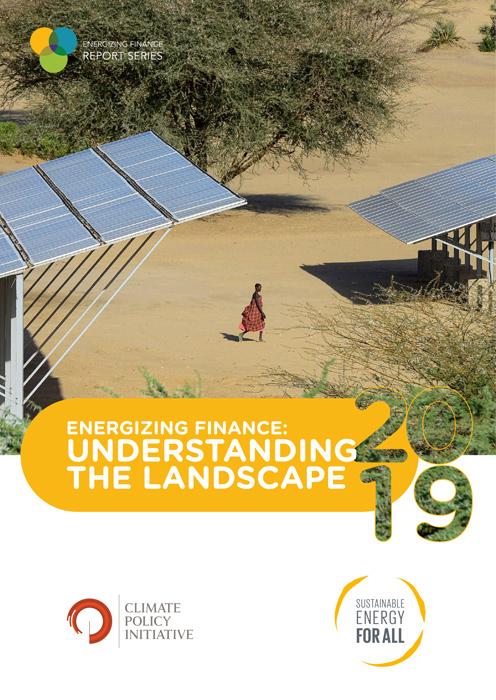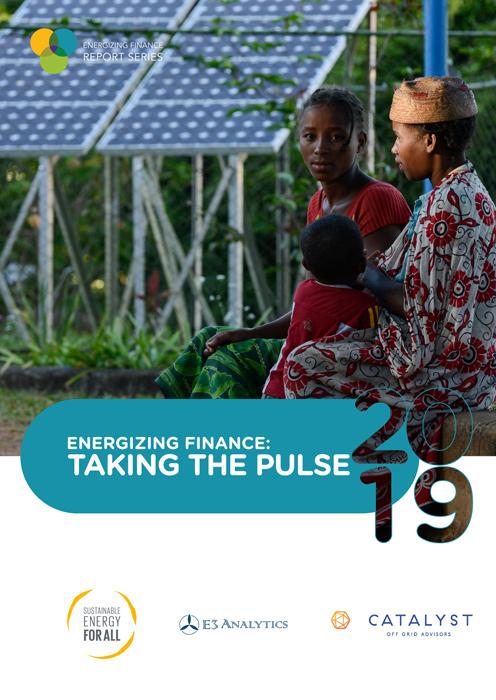The latest version of Energizing Finance includes two reports:
Energizing Finance: Understanding the Landscape 2019 – focuses on 20 developing countries in Sub-Saharan Africa and Asia with some of the world’s largest energy access deficits and that together are home to nearly 80 percent of those living without access—referred to as the high-impact countries (HICs).
This year’s report presents a five-year trend of finance commitments to energy access to call attention to the urgent and substantial action needed to meet Sustainable Development Goal (SDG7) by 2030.
Energizing Finance: Taking the Pulse 2019 – presents projected financing needs of enterprises and consumers in order to reach universal energy access by 2030 in three focus countries: Madagascar, the Philippines, and Uganda. The report shines a light on both the volume and type of capital—debt, equity, grants and affordability gap financing—and the policy actions required to accelerate SDG7 goals.


